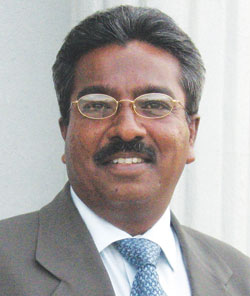

By Anoop Verma, Elets News Network (ENN)
Issue Date: May 02, 2012
Publication: eHealth

What is the focus area of RIS-PACS solutions that you are providing?
The focus of RIS-PACS Solution is ease of use, price-performance and virtualisation of patient image records. Our RIS-PACS virtualisation solution delivers simultaneously medical collaboration between specialists at different locations. This helps in multiple faculty consultations including remote locations especially in cases involving multiple organs injury. By integrating to OT cameras, live OT images can be streamed live for cross consultations. Virtualization is of tremendous help in Medical Tourism by enabling referring doctors to view the same images that the remote doctor is viewing. The RIS-PACS Solution makes life of a PACS administrator a lot easier, as there is only one server to maintain.
When it comes to Indian hospitals and other healthcare institutes, what are the key RIS-PACS requirements?
Indian hospitals and healthcare Industry in general happen to be price sensitive. Hence, the key requirement is that the solution should be cost competitive. Other than that it is also necessary that the solution should have interface with third party applications, it should offer ease to use for end users and it must conform to global standards of healthcare.
What are the ways by which the strategically designed workflow in RIS-PACS leads to improvement in productivity?
Indian market is price sensitive. Hence, one of the key expectations that a RIS-PACS solution is expected to fulfil is operational cost. Since, these solutions store images electronically, hospitals save a lot on operational costs. With RIS-PACS, hospitals can vastly improve their efficiency. Since these solutions enable attaching patient medical records and report electronically to their files, it is easier for doctors to send them within the hospital to experts / consultants for second opinion. They can also store for their record and reference. Also, electronic storage of data enables healthcare institutions to store the images in their archive and can be revisited by them at any point later for reference without the fear of physical damage to reports.
Can you give us one example of how your RIS solutions have proved advantageous for patient?
The best example is that it enables patient x-rays and other images to be digitally attached to patient electronic medical record and be sent outside or within the hospital to consultants/experts for second opinion within minutes.
In what ways do your RIS-PACS solutions get integrated with the external HIS solutions?
Our RIS-PACS solution can be completely integrated with external HIS solutions. The system uses what is called an ‘Integration Engine’ and an ‘Enterprise Service Bus’ to communicate to third party software. To put it simple terms, Integration Engine acts as a platform for the HIS Solution and the third party software to communicate by converting both their languages into a common language. After conversion, the Enterprise Service Bus communicates the meaning to each side and aides them to understand and work in sync with each other.
What challenges do you face while selling and installing your RIS-PACS solutions in India?
While we have not faced any particular challenge in selling our solution, we have had certain challenges while implementation. Implementation of RIS / PACS sometimes requires integration with third party solution. For this, we are dependent on appropriate technical support from the vendors of the third party for the smooth integration. Any inadequate support and coordination leads to delay in the implementation time line and would create a possible risk to the project.


